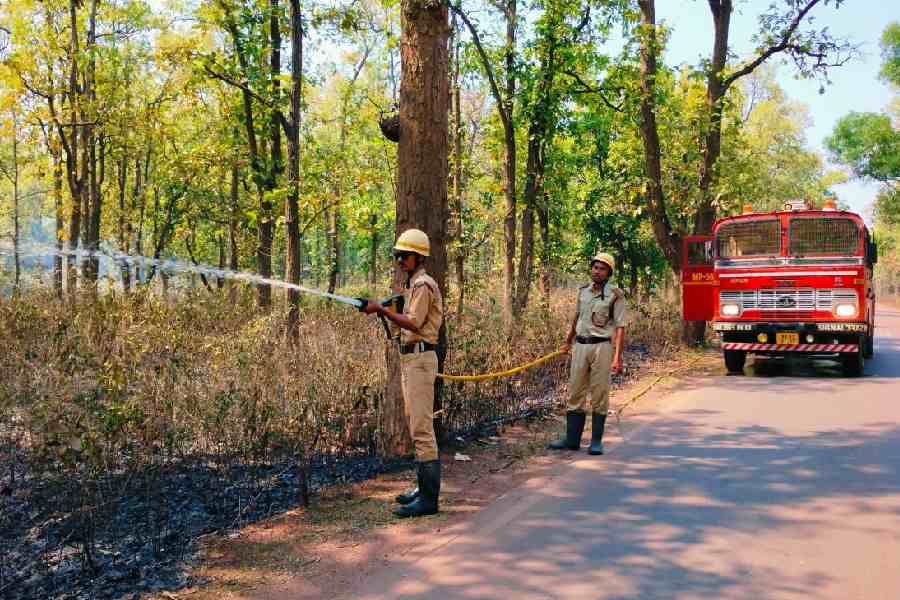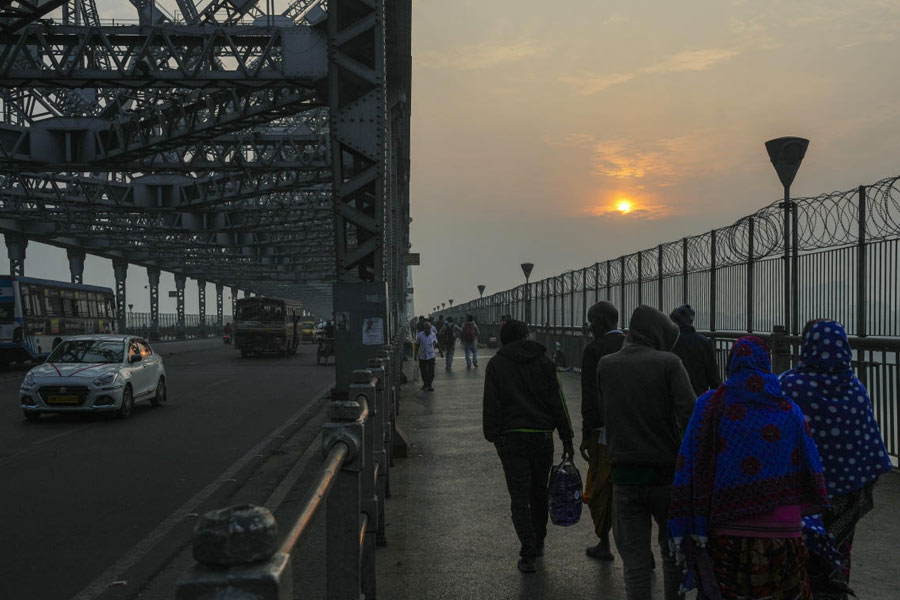Rising incidences of forest fires in south Bengal districts, particularly Jhargram, have emerged as a threat to wildlife as well as tribal people who depend on the forests for survival.
For some indigenous communities, March-April is crucial for collecting Mohua (Madhuca longifolia) flowers to brew the country liquor mohua.
However, the tradition comes with a malpractice — deliberately setting fire to the floor of the forest to clear dry leaves that hinder “flower collection”.
The fires, though apparently controlled, often go beyond their intended areas, merging with the region’s increasing wildfire crisis.
Wildfires are ravaging the forests in and around Jhargram, where at least three major incidents were reported last month alone.
The most recent blaze broke out on March 30 at Boriya near Jhargram town. Villages such as Tiyakati, Nayagram, Jamboni and Dharampur have borne the brunt of these fires, with vast stretches of forestland reduced to ashes over the last month.
Despite repeated awareness campaigns and warnings from the state forest department, the frequency of these fires is on the rise, posing serious environmental threats and endangering local communities.
The causes of such fires go beyond flower collection. One of the main reasons is said to be the thick accumulation of dry leaves on the forest floor. The dry foliage catches fire instantly which races with the wind. The problem is compounded by human-induced factors.
Garh Salboni villager Ajit Mahato said solely blaming Mohua flower collectors oversimplified the issue.
“What about areas with no Mohua trees? Many of these fires are due to negligence or mischief. People visit forests for picnics and cook meals. After they are done, they do not care to check if the makeshift oven is properly extinguished. Those embers can easily lead to a wildfire.”
Others like him also believe reckless human behaviour plays a crucial role. “People, including tourists, often throw bidi or cigarette stubs carelessly, which can trigger massive fires,” said Sumitra Mullick, another Jhargram resident.
Some local people, such as Sanjay Mahato, said the controlled burning of Sal saplings promote healthier growth of the plants. But he also talked about another troubling motive — hunting. “It’s the indigenous people’s custom. Hunters dense areas of the forest afire, forcing animals such as civets, wild rabbits and even wild boars to run towards their traps.”
It’s a calculated move by hunters, but the fires can undo calculations.
The forest department is working to curb the rising number of fires. Forest officials distribute handbills make public announcements explaining the dangers of wildfires.
Singaram Kulandaivel, chief conservator of forests, central circle of Bengal, stressed the need for proactive steps from all stakeholders. “These (forest fires) disrupt entire ecosystems and livelihoods. We are implementing localised fire prevention strategies, including early warning systems and community-driven fire vigilance services,” he said, also underscoring government policies such as the National Action Plan on Forest Fires and the Forest Fire Prevention and Management Scheme for providing structured frameworks to tacklethe issue.










